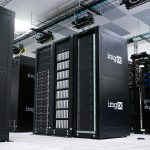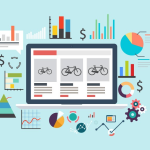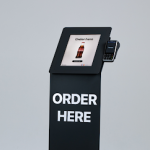A thoughtfully and properly configured data center will be highly likely to function as intended and be able to meet a client's current and future needs. However, data center configuration is a very involved process that requires going through the correct steps and taking the time to understand how the facility must function to perform as expected. Here are some factors and … [Read more...] about The Complete Guide to Data Center Configuration
Big Data
Learn everything you need to know about big data. Find out how companies are using this revolutionary technology and what it means for your business strategy.
Wearable Tech for Animals: Future Trends and Safety Applications
Wearable tech is a hot topic - and not just for humans. Just as wearables have become increasingly popular in the healthcare industry, they have also started to create quite the buzz in veterinary medicine and pet care. This comes as no surprise as people today tend to spoil their pets more than ever before, loving and caring for them as if they were a member of the family. If … [Read more...] about Wearable Tech for Animals: Future Trends and Safety Applications
Top 4 Considerations for Designing a Data Product
A data product is a tool or an application that processes data in a statistical way to generate future results. These results are aimed at helping businesses/organizations make better future decisions. Note that while some tools and applications may and do process data in a statistical manner, it is not necessary for all of these applications to fall under the data product … [Read more...] about Top 4 Considerations for Designing a Data Product
The Impact of 5G Technology on Business
5G is one of the latest technology buzzwords in the business world. It sets the scene for advanced remote control, intelligent transportation, and workplace automation. 5G technology is developing rapidly to enable the next generation of wireless communications and power the metaverse. It is paving the way for more than just super-fast data transfer. The question is, what does … [Read more...] about The Impact of 5G Technology on Business
Is “Self-Service” Data’s Biggest Lie?
Data self-service, the ability for stakeholders in the organization to answer their own business questions with data, is a top initiative for nearly every data leader I've spoken to this year. It's so foundational to creating a data-driven organization, that most of the questions surrounding it focus on the "when" rather than the "why." That's why we were surprised to hear it … [Read more...] about Is “Self-Service” Data’s Biggest Lie?
What is big data?
Big data is a term that refers to the massive amount of digital data created and shared every day. Big data can transform how we live, work, and communicate. It can be used to improve everything from public health and urban planning to business and marketing.
Big data is also changing the way we think about privacy and security. The volume, velocity, and variety of big data present challenges and opportunities for organizations and individuals. Regardless, big data is here to stay, and its impact will only continue to grow in the years to come.
What is big data analytics?
Big data analytics is the process of turning large, complex data sets into actionable insights. Businesses use various analytical tools and techniques, including machine learning and statistical analysis, to do this.
Big data analytics can be used to improve decision-making in areas like marketing, operations, and customer service. It can also be used to identify new business opportunities and optimize existing processes. With the help of big data analysis, businesses can gain a competitive edge by using their data better.
Want to learn more about big data? Datafloq has courses available. Contact us to get started.
When was big data introduced?
The term big data was coined in the 1990s, with some giving credit to John Mashey for popularizing the term. However, the concept of big data has been around for much longer.
Where does big data come from?
In the early days of computing, scientists and businesses began to realize that the amount of data being generated was increasing exponentially. As a result, they began to develop new methods for storing and processing data.
Over time, these methods have become increasingly sophisticated and have played a key role in enabling businesses to make sense of vast amounts of information. Today, big data is used in various industries, from retail to healthcare, and its importance is only likely to grow in the years to come.
What are examples of big data?
One of the most common examples of big data is social media data. With over 2 billion active users, Facebook generates a huge amount of data every day. This includes information on user interactions, posts, and even location data. Analyzing this data can help companies better understand their customers and target their marketing efforts.
Another example of big data is GPS signals. These signals are constantly being generated by devices like cell phones and fitness trackers. When combined with other data sets, GPS signals can be used to provide insights into everything from traffic patterns to human behavior. Finally, weather patterns are another type of big data set. By tracking these patterns over time, scientists can better understand the impact of climate change and develop strategies for mitigating its effects.
How do companies use big data?
Companies use big data in marketing, product development, and customer service. By analyzing large data sets, businesses can identify patterns and trends that would be otherwise difficult to spot. For example, a company might use big data to track customer behavior patterns to improve its marketing efforts.
Alternatively, a company might use big data to improve its products by identifying areas where customers are most likely to experience problems. For instance, big data can be used to improve customer service by finding pain points in the customer journey. Ultimately, big data provides companies with a valuable tool for gaining insights into their business operations.







